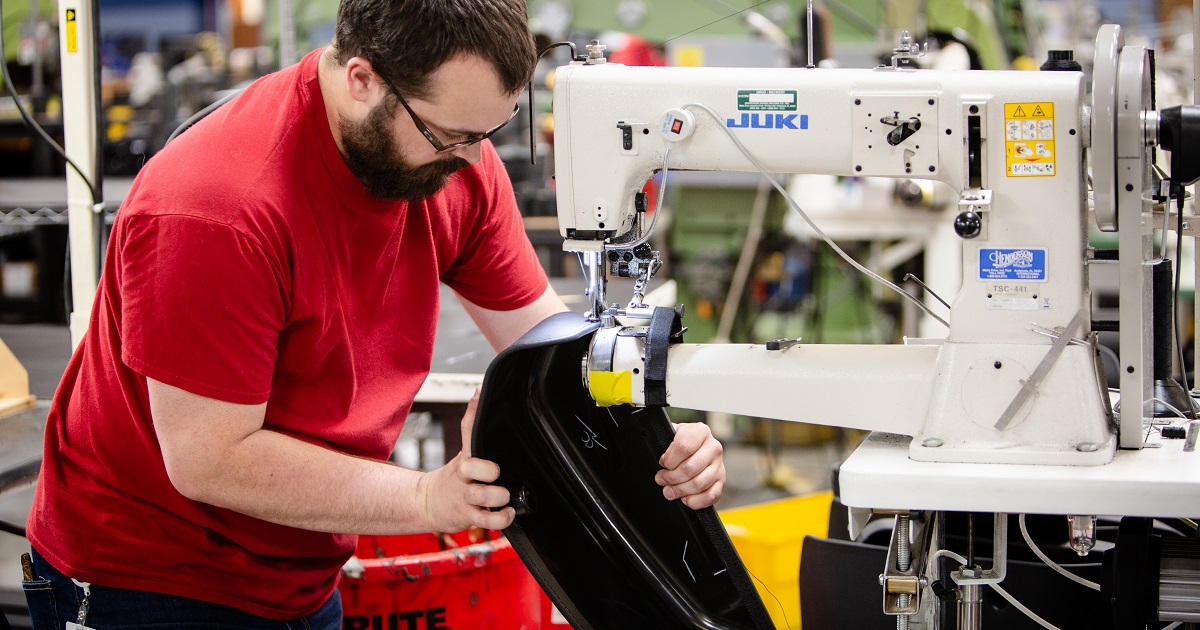For Media Inquiries
Contact Revee White, Director of Marketing and Communications at rwhite1@mem-ins.com or 573.499.4190.
We’ve all had experiences that make us say “That was a close call.” You may have tripped over a power cord or left the stove on. A missed step or wobble of the ladder can cause a quick, heart-pounding moment. In the workplace, these moments are called near misses. Even though they don’t cause an accident at the time, we can use these moments of gratitude to teach us the power of prevention – and take note the warning they provide.
On this episode of the WorkSAFE Podcast, we are joined by Mark Woodward. He is a Safety and Risk Trainer with MEM. His role is to help people prevent, and prepare, for the unexpected through safety training and education.

First, we’ll explain what a near miss is. Then, we’ll share why employers should take a second look at them. Finally, we’ll recommend a few ways employers can use near miss data to their advantage.
Listen to this episode on the WorkSAFE Podcast, or read the show notes below.
What is a near miss?
The definition of a near miss is easy to remember. It’s an event where there isn’t any property damage or injuries – but there could have been. “In 20 years of doing safety and emergency management and emergency response, you see quite a few near misses,” Woodward shared. Near misses happen more often than employers, and employees, think. For example, a trip without a fall is a near miss. A finger or hand pulled out of harm’s way just in time is too.
Human nature means we often want to forget a near miss. They are moments where we narrowly avoid injury or damage. But Woodward pointed out that a near miss means you’ve gotten lucky. And he doesn’t like to rely on luck when it comes to safety.
“You don’t want those things to happen to a coworker. You don’t want those things to happen to a family member,” he explained. A close call is a red flag – and a warning. “You don’t want that to happen to you again.” The next time may not be so lucky.
Worth a second look
Near misses are worth a second look. “Close calls are important. They are incidents,” Woodward explained. “And they do need to be scrutinized more.” Near misses cause little moments of fear. Fear that we might get injured, injure someone else, or damage something.
Employers don’t want good employees to get hurt. They don’t want to face civil penalties or lawsuits. “Responsible folks will address this fear,” he added. A safety program is the best option. It includes safety policies and procedures. Employees are also provided with the right tools and training. Woodward acknowledges that safety programs alone don’t prevent incidents. But addressing potential safety concerns – and close calls – can go a long way.
Near misses: Important chances for employers to learn
A lot of people don’t consider near misses worth documenting. After all, no one is hurt. If nothing was broken, then there’s nothing to look in to – right? Woodward sees things differently. A near miss is a chance to ask an important question: “‘What can we do differently next time to prevent it?’”
“Those near misses are free incidents we can learn from,” he said. They don’t cost anything. There are no claim costs, medical expenses, or penalties.
A warning of more serious incidents to come
To show how important they are, Woodward often refers to the work of Herbert William Heinrich, an American safety pioneer in the 1930s. Heinrich created an important safety theory he shares. For every 1 serious incident, there are 29 less serious incidents that happen before it. These are usually minor. They might require a quick visit to a first aid kit, if anything at all. However, for those 29 less serious incidents, there are up to 300 near miss incidents.
How many times has someone tripped over that rug in the entryway? Or gotten distracted while behind the wheel? Further, how many more times can it happen before something more serious occurs?
“At Missouri Employers Mutual, we have roughly 11,000 worker injury reports per year.” Using the Heinrich theory, that means MEM customers alone may have faced nearly 3.3 million near misses. Employers should act today to stop a near miss from turning into a minor incident, or even a more serious one.

Turning near misses into opportunities in the workplace
Near misses don’t just provide valuable data to employers. They are also key to preventing future incidents. Sometimes, an employee is the only witness to a near miss. For example, they may be the only one in a company vehicle when they accidentally cut someone off. They didn’t cause an accident, or any property damage. But it’s definitely a close call. How can business owners get workers to share these incidents?
Create a culture of honesty
Woodward advises creating a culture of honesty and openness. Some employers take strong action when they receive a safety report. They may require post-incident drug and alcohol testing. Or, they may have the employee fill out piles of paperwork. Both can be a part of incident investigations – especially for those where injuries happened. But requiring this for near misses may not get employees talking. If they are penalized for reporting close calls, then they may not report again. Further, they may encourage other employees not to either.
Educate on near misses
If you want to make the most of near miss moments, then the first step is to educate employees. What are near misses? Why are they important? Employees need to know the answer to these questions. Offer them some examples. Most have likely experienced a close call before, even if they were working elsewhere.
Then, take a look at your incident reporting policy. Does it include reporting near misses? If it doesn’t, then make changes to include it. Make sure employees know that near misses should be reported. After you receive your first report, it’s time to start investigating.
Identify contributing factors
Sit down with every near miss report you receive. Woodward recommends picking out all of the contributing factors. Did a machine break down or malfunction? Was the employee tired or distracted? Did drugs or alcohol play a role? Make a report from your findings. This will help you take the next step.
Plan to make change
A completed near miss report offers important insights. “With that information, we make change,” Woodward explained. For him, changes can be organized into three categories:
- Safety policy changes. Are new or better safety steps needed to help employees?
- Engineering changes. Do you need to repair or replace equipment?
- Personal protective equipment (PPE) changes. Do employees need more protection?
Change can be difficult for management. Sometimes they need time and money. The business may require new equipment, training, or computer programs. If these changes will take time, then be transparent with employees. Share the change with them – and the steps needed to make it. Show employees that their reports are making a difference.
Start talking about near misses today
Near miss reports can provide employers with new and valuable safety information. “If you aren’t discussing near misses, start today,” Woodward finished. Set aside 10-15 minutes to talk about near misses with employees. Near misses can be worrying. But employers can use close calls today to stop serious incidents tomorrow.
For free safety posters, sample policies, and safety toolkits, visit our Resource Library. Then, discover more about show to investigate incidents in this WorkSAFE Podcast episode.